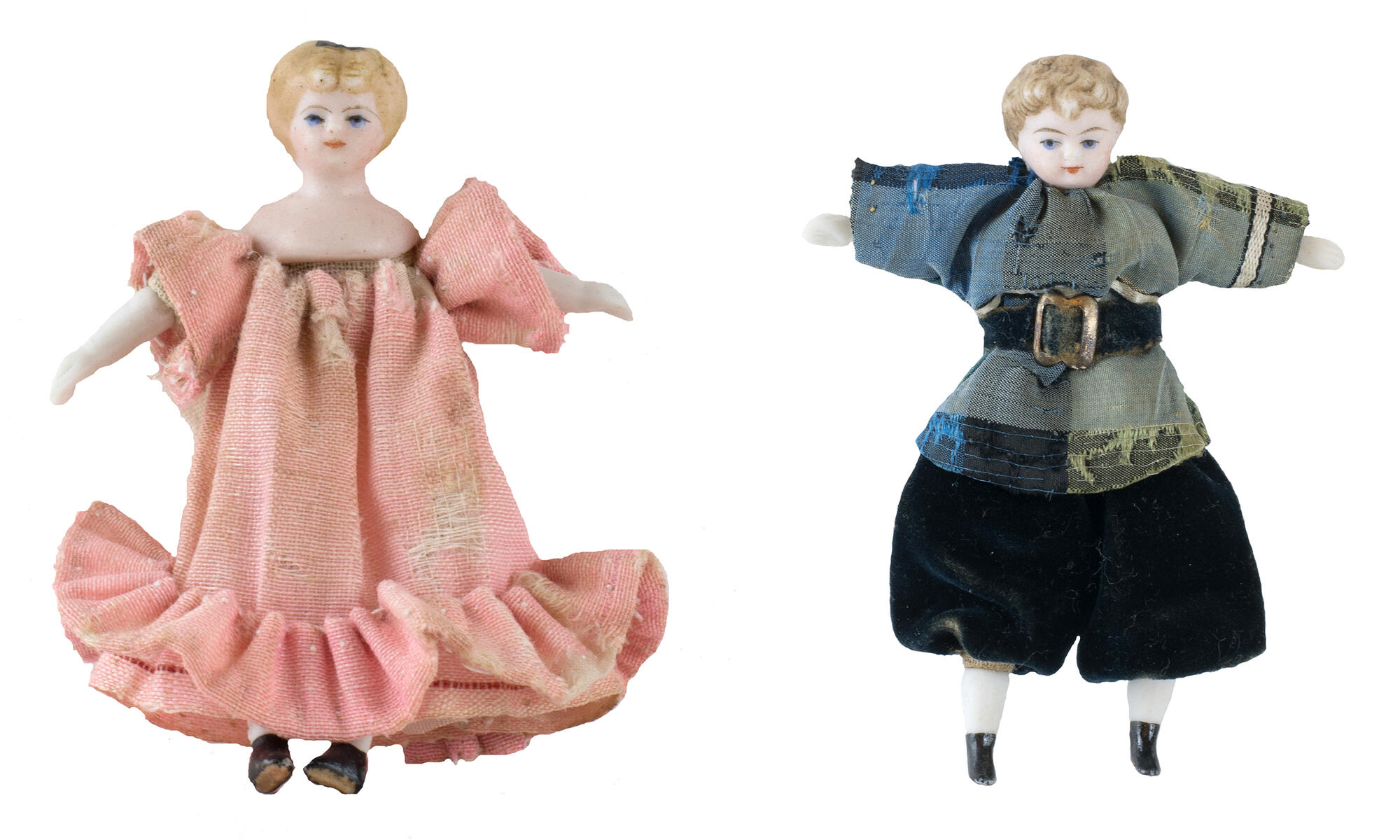The exhibition presents two miniature antique dolls. The bodies of the girl and boy figures are made of cloth, and the heads, arms and legs are made of tinted porcelain.
Before they came to the museum, the toys were kept in the family of Priest Vasily Orlov, who lived in the village of Stepankov, Melenkovo District. The dolls belonged to his wife Alexandra: she played with them as a child and then gave them to her daughters.
The priest’s family had a hard time after the Russian Revolution of 1917. In 1936, his wife died, and a year later, Orlov was purged and shot. His five children were persecuted, but one of his daughters, Nina Orlova, managed to keep some memorabilia, including these dolls.
In Europe, the first porcelain dolls were manufactured in housewares factories in the 1830s. It was believed that they originally appeared in China, which was the homeland of porcelain. Therefore, the dolls, made in the European factories, became known as “China doll” or “Nanjing doll” — after the name of the city of Nanjing, the former capital of China.
The arms, legs, and heads of the dolls are firmly fixed to the shoulders. They were initially made of glazed Chinese porcelain, and later of matte, always white, untinted, and unglazed porcelain. It acquired the name “biscuit”. Sometimes dolls were also made from cheaper quality porcelain with a rough surface.
The production of porcelain dolls in Russia started at the turn of the 19th and 20th centuries. They were made at the factories of Adam Szrajer and Jacob Fingerhut, Sergey (according to other sources –Semyon) Dunayev and other entrepreneurs. In small numbers, China dolls were made at the factories of “Matvey Kuznetsov’s Partnership for Manufacturing Porcelain and Faience Items”. Initially, the porcelain parts for the figures were ordered from European countries, for example from Germany, but later, in Russia, there appeared domestic production of porcelain. Some of these items were exported.
Almost all China dolls of the past centuries, both Russian and foreign, were unmarked. Therefore, it is impossible to make a definite conclusion about the production place of the dolls from the museum collection. However, researchers assume that they were made in Russia at the late 19th century or early 20th century.
Before they came to the museum, the toys were kept in the family of Priest Vasily Orlov, who lived in the village of Stepankov, Melenkovo District. The dolls belonged to his wife Alexandra: she played with them as a child and then gave them to her daughters.
The priest’s family had a hard time after the Russian Revolution of 1917. In 1936, his wife died, and a year later, Orlov was purged and shot. His five children were persecuted, but one of his daughters, Nina Orlova, managed to keep some memorabilia, including these dolls.
In Europe, the first porcelain dolls were manufactured in housewares factories in the 1830s. It was believed that they originally appeared in China, which was the homeland of porcelain. Therefore, the dolls, made in the European factories, became known as “China doll” or “Nanjing doll” — after the name of the city of Nanjing, the former capital of China.
The arms, legs, and heads of the dolls are firmly fixed to the shoulders. They were initially made of glazed Chinese porcelain, and later of matte, always white, untinted, and unglazed porcelain. It acquired the name “biscuit”. Sometimes dolls were also made from cheaper quality porcelain with a rough surface.
The production of porcelain dolls in Russia started at the turn of the 19th and 20th centuries. They were made at the factories of Adam Szrajer and Jacob Fingerhut, Sergey (according to other sources –Semyon) Dunayev and other entrepreneurs. In small numbers, China dolls were made at the factories of “Matvey Kuznetsov’s Partnership for Manufacturing Porcelain and Faience Items”. Initially, the porcelain parts for the figures were ordered from European countries, for example from Germany, but later, in Russia, there appeared domestic production of porcelain. Some of these items were exported.
Almost all China dolls of the past centuries, both Russian and foreign, were unmarked. Therefore, it is impossible to make a definite conclusion about the production place of the dolls from the museum collection. However, researchers assume that they were made in Russia at the late 19th century or early 20th century.



